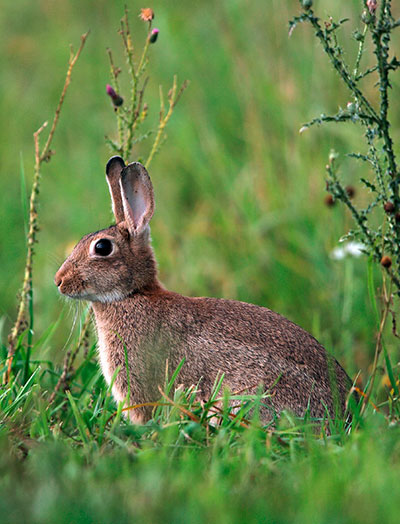
These little “cottontails” like to be sociable and therefore live in socially structured groups called colonies. Their habitat is diverse and is also located in open landscapes with hedges and bushes, at the edges of forests, in vineyards and in plant nurseries or cemeteries. You can also find rabbits in urban green areas.
One key thing they need to build their underground warrens is dry, loose soil that is as lightweight as possible. Warrens are normally only 30/40 metres away from their feeding grounds. Rabbits have short flight distances and rely on short sprints to their warrens to escape predators.
Rabbits eat anything “green”: grasses, grain (seeds), softwoods, vines, fruit trees. The damage to crop plants can be considerable. In agriculture, this isb often visible at a large scale along the edges of fields. Biting and peeling damage to trees and shrubs can be considerable. Rooting also leads to damage, sometimes only as a late consequence. Especially in vineyards (a special crop in most German Federal States), holes in the ground can cause damage to work equipment. And in cattle pastures, for example, cattle can injure themselves when stepping into holes.
Damage cause by wild rabbits is subject to compensation in Germany in accordance with the Federal Hunting Act. An
AKO net fence is recommended as an effective defensive measure. It should be 65 cm high. The horizontal current conduction is achieved with 3 x 0.20 mm stainless steel conductors per wire. The extra small mesh size of 5.9 cm should ensure the highest level of safety. The fence elements are quick and easy to connect with
Litzclip®.